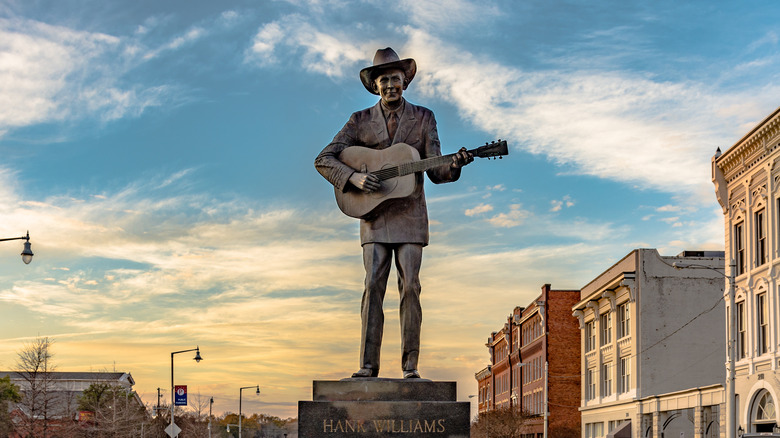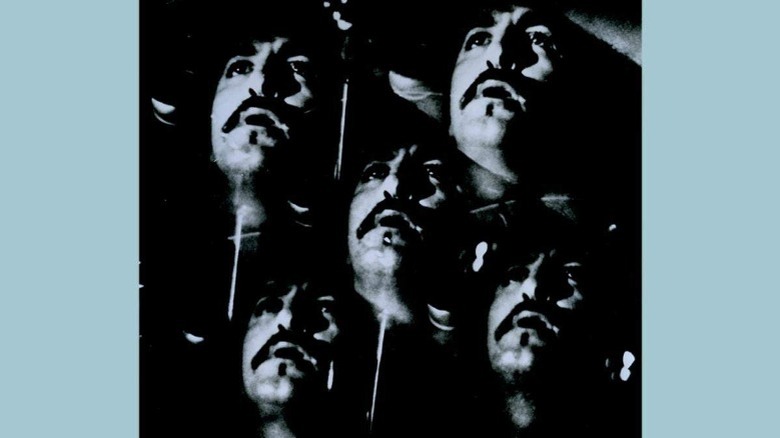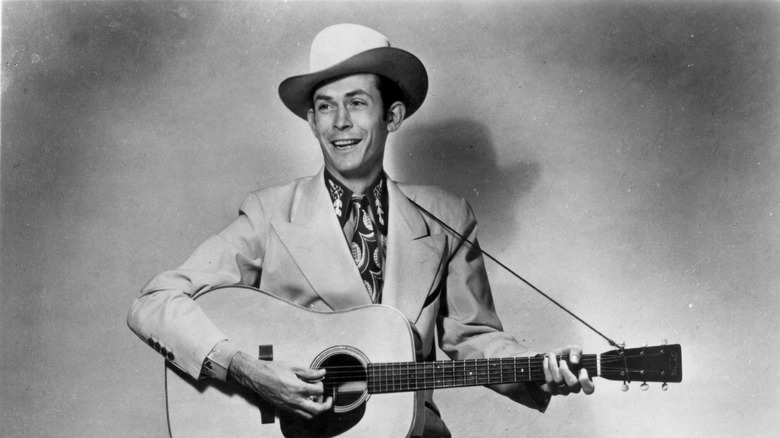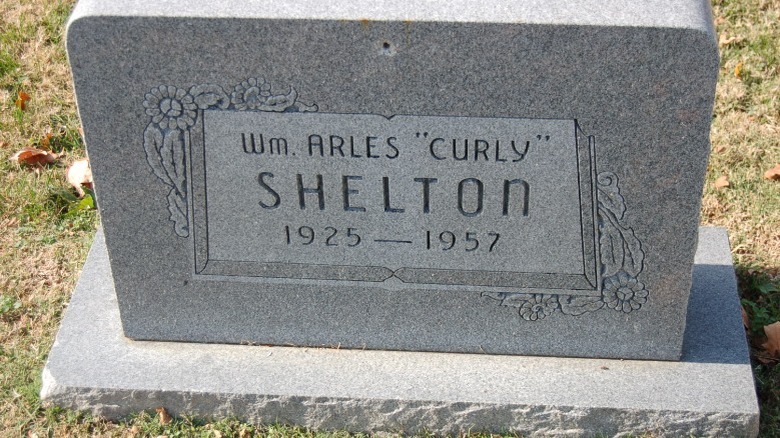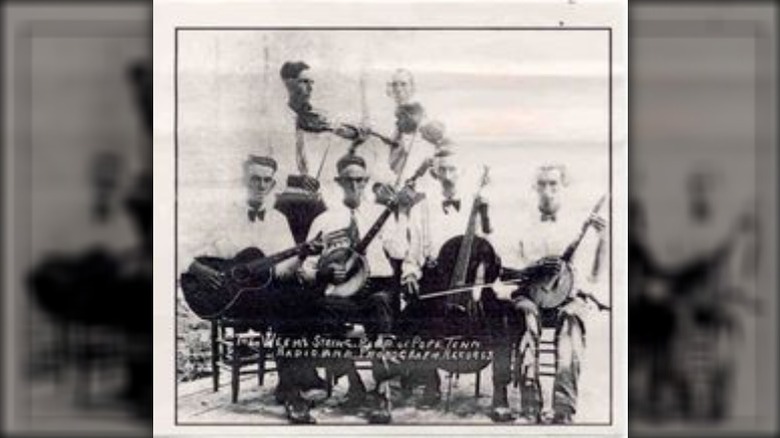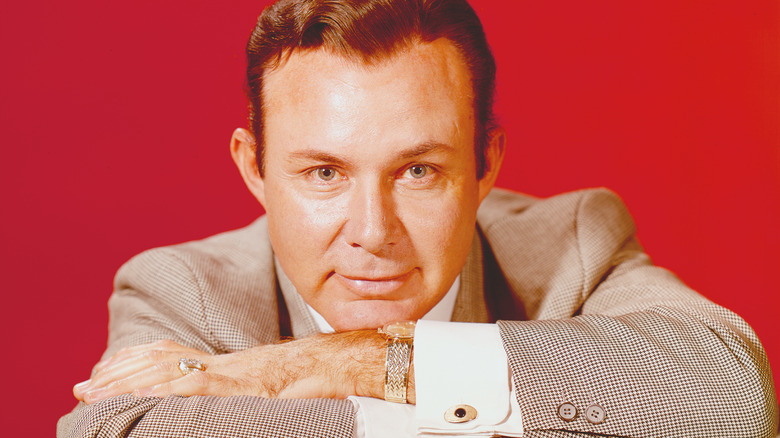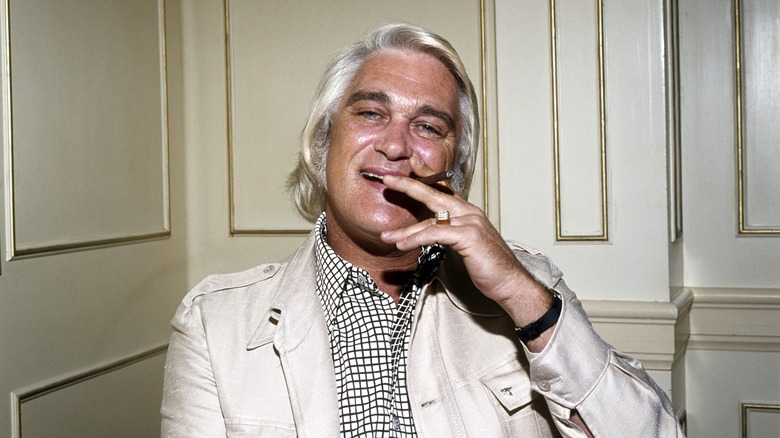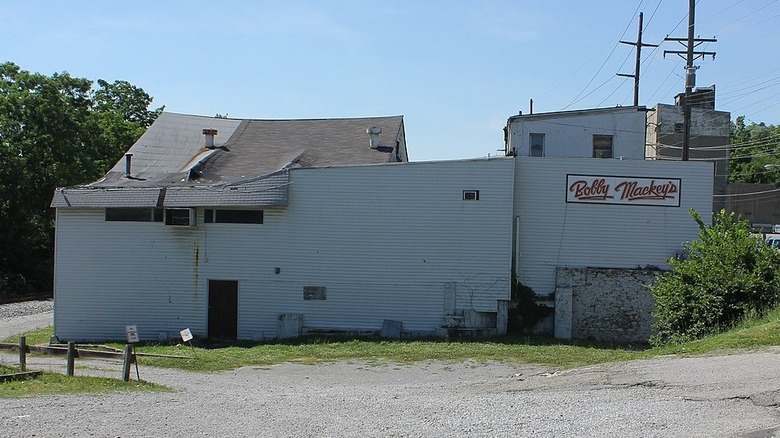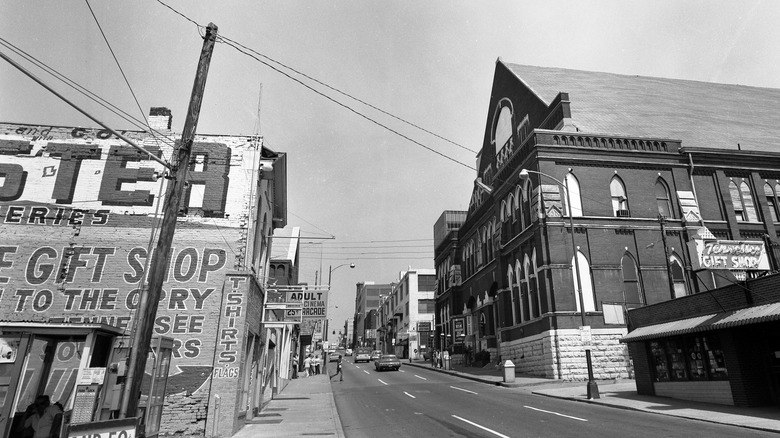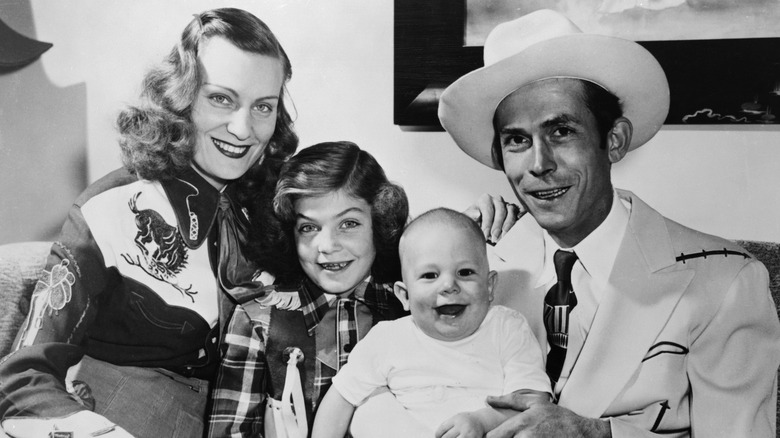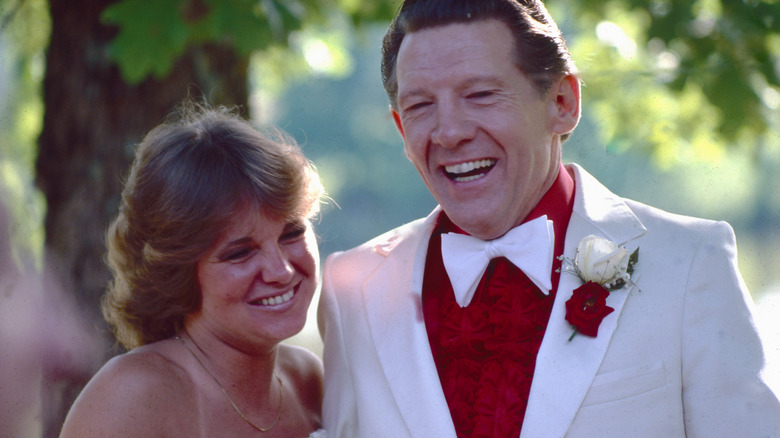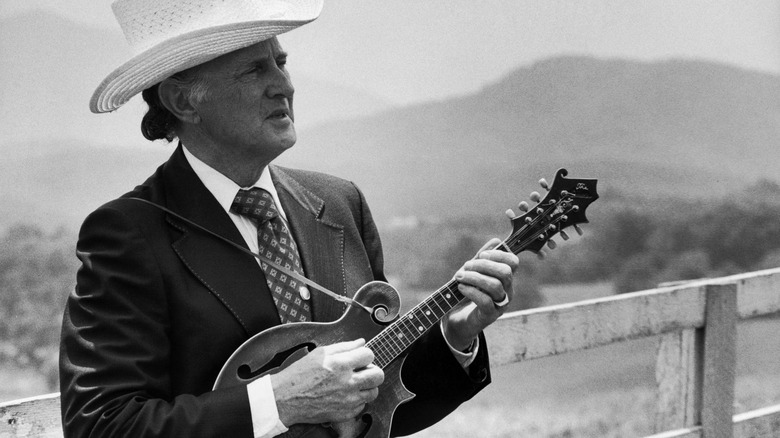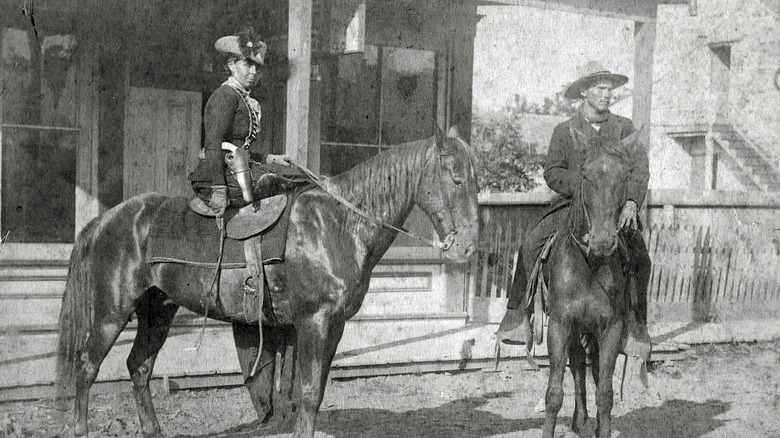Classic Country Mysteries That Remain Unsolved To This Day
No one can sing a mournful ballad better than a classic country star. Those performers really made you feel their pain, expressing all the suffering they put into their songs. And while thankfully most country songs are just creations of a talented lyricist, unfortunately, many of the people who sang them had lived through horrors, or would come to bad ends. Classic country music was rife with tragic events.
The silver lining, if you are really looking for one, is that at least most of the biggest tragedies that befell classic country stars had obvious culprits. In most cases of terrible events like accidents or murders, assault or arson, someone was arrested, or at least what happened is pretty obvious. But every now and then something big and terrible went unsolved. Sometimes it might be just rumors that things weren't as they seemed, all the way up to an unexplained disappearance that has baffled authorities for decades, or a suspicious death, or even just a seemingly inexplicable incident the artist never bothered to give a reason for that has driven fans crazy looking for an explanation ever since.
Some of these mysteries might still have a chance of being solved, at least while the participants are still alive, while others you'll just have to accept you are never going to know the answer to. But for anyone who loves classic country, true crime, or just a good brainteaser, these are the mysteries that remain unsolved to this day.
Why did Jim Sullivan disappear?
Jim Sullivan was a country-blues musician with an edge of psychedelic. He had famous friends, including actor Dennis Hopper, and had released two albums. Then he disappeared and was never seen again.
Jim had a family but left them behind to go to Nashville for work. Except he never showed up. His wife Barbara got a call from him on March 5, 1975, the day after he left California. He started by telling her he was fine, always something terrifying to hear when you have no reason to think the person saying it is not fine. Despite asking him to tell her what was wrong, he refused. "You wouldn't believe if I told you," he said (as reported by The New York Times), she recorded later. "Forget it. Just forget I said anything." That was their last phone call.
Jim's car was found abandoned three days later in the small town of Santa Rosa, New Mexico. It contained his ID, a box of his albums, and his beloved guitar. "When I heard that, I knew he wasn't coming back," Jim's friend Al Dobbs said. "No matter what, Jim would never have left his guitar." The police investigation turned up no clues about where Jim was or why he'd disappeared. One local thought they didn't do a great job though, saying, "I always thought there was something strange about how that went down, why they didn't investigate it more." A search by family members and volunteers was more thorough. "There was no arroyo left unturned," another local said, "and no trace of him found."
Was Tammy Wynette really kidnapped?
In 1978, the "First Lady of Country Music" Tammy Wynette told People magazine about the terrifying carjacking and kidnapping she'd been the victim of a few weeks before. "I felt a poke in my side and heard a man's voice say, 'Drive!'" she recounted. "All I could see was a brown glove, a lot of hair on his arm and two inches of gun barrel ... It was the most terrifying experience of my life." Wynette was finally released 80 miles away and went for help. She had visible injuries on her face and neck where the kidnapper had punched, slapped, and strangled her.
But did those injuries really come from a kidnapper? Did a kidnapping even take place? There are some reasons to doubt Wynette's story: Her children contend she was in an abusive marriage and the injuries were caused by her husband, their stepfather George Richey. In her memoir (via The Boot), Tamala Georgette Jones wrote, "She did admit to my sister that when all that stuff came out about her being kidnapped in 1978 that she and Richey had had a fight and he had beaten her. He threatened to destroy her life and write a tell-all book so she decided to stay with him ... so he concocted the kidnapping story for PR." Richey called previous accusations by Jones "preposterous," and, publicly, Wynette never recanted her kidnapping story.
When (and where) did Hank Williams die?
Hank Williams Sr. is one of the most famous country music stars of all time, despite dying at 29. The weird thing is no one really knows when Hank Williams died. On New Year's Eve, 1952, a 17-year-old Charles Carr was driving Williams 500 miles to get to a gig the next day. Officially, he realized something was wrong with his passenger in the back seat in the early hours of the morning and detoured to a hospital. Williams was pronounced dead there, with January 1, 1953 appearing on his death certificate.
But there are plenty of people who have other ideas about when Williams breathed his last, possibly even hours before. Knox News reports that Tennessee Highway Patrol Cpl. Swan Kitts pulled Carr over at 1 a.m. that morning for driving erratically and saw Williams in the back seat. He reported the musician already "looked dead" but was reassured by Carr that Williams was just under the power of a sedative.
Could those injections of morphine, given to him at a Knoxville hotel before getting back on the road, have been what killed him? The doctor who gave them obviously disagreed, saying (via Knox News), "The shots I gave Williams had absolutely nothing to do with his death. It is ridiculous to think that they did." But sometime after receiving the injections, Williams had to be brought to the car in a wheelchair. Some think he was already dead at that point, and his corpse was put in the car by people who thought he was just out of it.
Who killed Curley Shelton?
Proving that being a lead singer is sexy no matter what, William "Curley" Shelton of the band Dixie Six – stars of the 1950s TV music program "Hillside Hoedown"– who was described by the Courier and Press as looking like "the miracle offspring of Elvis Presley and Andy Griffith," was nevertheless a confirmed ladies' man. "[Curley] was something else," a local bar owner said. "He sang those old love ballads, and women just went crazy. He had no trouble getting all the women he wanted."
This would become a problem for the musician. Shelton once flagged down the then-Henderson County Sheriff Lee Williams and told him that a guy "is after me and wants to kill me. What can I do?" "Why is the man after you?" Williams said he asked. The answer? "Because I been with his wife a bunch of times." The sheriff told him to leave the man's wife alone.
Three years after that conversation, on December 5, 1957, Shelton was found in his car outside a VFW hall. He'd been beaten to death, pummeled so badly that the cops who arrived on the scene mistakenly thought he'd been shot in the head. Despite an extensive investigation where over 100 people were questioned, no one was ever arrested, let alone convicted for the murder. But the sheriff claimed to know what the motive would have been. "Shelton was caught with a woman by a man – maybe the woman's husband – and the man simply beat him to death," Williams said. "That's my theory, and I'm sticking to it."
Who were the Weems String Band and what happened to them?
There's only one known photo of the Weems String Band (pictured above): They appeared literally out of nowhere and disappeared right after. During the 1920s, "hillbilly string band" music was all the rage, and the Weems String Band recorded a single record for Columbia – yet "R. Crumb's Heroes of Blues, Jazz, and Country" explains that their album "is considered by many to be the single finest white traditional recording of the period."
Their playing style made the band even more mysterious. Despite living in the backcountry of Perry County, Tennessee, they held and played their instruments in distinctive ways that indicated they almost certainly had professional training on the violin, which might seem unlikely for people who came from somewhere so remote. Plus, one of the members played the cello, which you normally wouldn't find in a string band at all. And they didn't play in the normal style either, instead producing what was essentially an experimental record at a time when no one in the genre was doing anything like it. "R. Crumb's" goes so far as to say that "no group equaled the brilliant creativity of the Weems String Band."
The record they produced had an A-side, "Greenback Dollar," and a B-side. That was all these virtuosos ever recorded. While there are six people in the photo, we only know who four of them were: Dick, Frank, and Jesse Weems, and their brother-in-law Alvin Condor. The other two are thought to be younger Weems brothers, but their names were lost to history until a member of the forum, Banjo Hangout, offered that the two were Atlas "Dodge" Conder and Ray Hinson. The explanation was anecdotal, so whether or not there's truth to it is up to folk tradition.
What did Billie Joe throw off the bridge?
Classic Country Music calls Bobbie Gentry "one of the most mysterious figures in country music history." After a decade of country music success, she decided that performing had lost its attraction and went back to a normal life. She hasn't made a public appearance since 1981.
But she left a mystery in song behind her that's been driving fans crazy ever since. "Ode To Billie Joe" tells the story of a girl who finds out at dinner with her family that the titular Billie Joe has died by suicide, by jumping off the Tallahatchie Bridge. It's implied that she and Billie Joe were sweet on each other and — here is the mystery — they had been witnessed throwing something into the river below that same bridge shortly before he died. What did they throw? We never find out.
Explaining her reasoning for keeping the detail so vague, Gentry said, "First, it locks up a definite relationship between Billie Joe and the girl telling the story, the girl at the table. Second, the fact that Billie Joe was seen throwing something off the bridge — no matter what it was — provides a possible motivation as to why he jumped off the bridge the next day." As for what they threw in? Gentry has never told, although she was asked all the time by fans and heard many theories. (Engagement ring? Draft card? Baby?) She once commented, "Suppose it was a wedding ring."
A TV movie based on the song gave its own answer that really disappointed fans: the girl's childhood doll.
What was Jim Reeves' connection to the Kennedy assassination?
Country star Jim Reeves had a weird connection to the Kennedy assassination, made weirder by the fact he died in a plane crash less than a year later. Larry Jordan's biography "Jim Reeves: His Untold Story" records a Texas radio station owner's account of what happened as news of the assassination unfolded in November 1963, and Lee Harvey Oswald's picture was shown on TV: "Reeves told me and everyone else watching that he recognized Oswald and had remembered seeing him at the Longhorn Ballroom in the crowd on several occasions." It's also alleged that Reeves knew Jack Ruby from the same place, where Reeves and his band often performed.
In August of the next year, Reeves was killed in a small private plane crash. But he had something mysterious on him. As songwriter John Loudermilk recounted: "[Music producer Chet Atkins] called me and he said, 'Jim's down. He crashed last night and we need to go out and find him.' And I said, 'Why?' And he said, 'He's got a briefcase that has some important papers in it that are private, and nobody should have those.'" The briefcase was never found.
All a coincidence? Possible, but the mystery deepened. Larry Jordan, Reeves' biographer, says that while researching his book, "I received an unsolicited phone call from a man ... who supposedly had worked for U.S. intelligence – who warned me not to probe too deeply into the Reeves crash." As with so many things surrounding the JFK assassination, conspiracy theorists see something fishy going on when you add it all together.
Why did Charlie Rich burn an envelope when presenting at the CMAs?
Charlie Rich had a 35-year career, which included 11 No. 1 records on the country charts, and even a crossover hit that reached No. 1 on the pop charts. And in 1974, the Country Music Association of America awarded him Entertainer of the Year, the group's biggest accolade. This meant that he would present that same award the following year, but this is when his career went up in flames, literally.
According to History, Rich took the stage to announce the winner, opened the envelope, and read out "John Denver." But then Rich did something inexplicable. He took a step back and fished in his pocket for a lighter. Then he lit the envelope on fire. Fortunately, John Denver wasn't there to see this, but those who were in the audience were gobsmacked.
What was Charlie Rich trying to say? Since Rich never explained himself, it's been left to others to try to theorize about his mysterious action (which, incidentally, got him banned from all future CMA award shows.) Many people think he was mad about Denver's win, possibly because he didn't think Denver was really a country musician. But Rich himself was often considered "not country enough." There's also the fact Rich admits he was on prescription pain medication washed down with multiple gin-and-tonics at the time. His son has his own reasoning: "He used bad judgment. He was human after all. I know the last thing my father would have wanted to do was set himself up as judge of another musician."
Where is the head of the woman who haunts Bobby MacKey's Music World?
Bobby MacKey's Music World (pictured) is a popular honkey-tonk in Kentucky, owned by the eponymous country singer Bobby MacKey. There's a sign on the door reading: "Warning to our Patrons: This establishment is purported to be haunted. Management is NOT responsible and cannot be held liable for any actions of any ghosts/spirits on these premises" (via The Bitter Southerner). The honkey-tonk has appeared on many ghost-hunting shows, and is purported to be the site of many grisly crimes over the years. Almost all of it is legend, but one horrific crime did take place nearby, and the victim is said to be one of the ghosts that haunt the building today.
In 1896, the 5-month pregnant Pearl Bryan arrived in Cincinnati, Ohio, in order to procure an abortion. The father of her child and his roommate were waiting for her at the train station. What happened next is a mystery, but somehow Bryan ended up dead. When her body was found, it was missing a head. As reported at the time by The Indianapolis Star, before they were executed for her murder, the men changed their story about what they did with Bryan's head numerous times, saying it was "in the Ohio River," "buried in a sandbar at Dayton, Kentucky," and "burned in a furnace." Despite extensive searches, the head was never found.
One legend says the men threw it into the already-bloody well of a nearby slaughterhouse, across the river in Kentucky. The building that housed the slaughterhouse? It's now the home of Bobby MacKey's.
Who murdered Debbie Roe?
In 1974, sisters 17-year-old Vicky Roe and 22-year-old Debbie Roe were living the dream of everyone who ever wanted to be a professional entertainer. The Canadian country singers were about to break into the big time. "We'd been singing together professionally for about four or five years," Vicky told podcaster and author Eve Lazarus in 2021. "We used to do talent contests around town, and we used to sing at the nightclubs before we could legally get in." But that year, their demo was sent to a Nashville record company, who liked it so much they had the girls fly out to record their debut album.
While their singing career was looking hopeful, Debbie still needed to work a day job when they returned to Canada. On February 22, 1975, she finished her shift at the OK Corral bar and drove home at 2 a.m., but she never arrived. Her car was found miles away from her viciously murdered body.
Her friend and roommate Kym Neumann thinks someone Debbie knew messed with her car, then offered her a ride before killing her. "It would have had to have been someone that she recognized for her to get in a car with some guy," she said (via Vancouver Is Awesome). "That car was in really good shape. ... I believe somebody did something to her car." While Debbie's family had theories about which of the men in her life could be responsible, no one was ever arrested for the crime.
Did Hank Williams have a secret child?
Hank Williams' death wasn't the only mystery about his life. There is conflicting information on whether he had a child he never officially recognized — and the two different sides of the story come from the same guy, the one who might or might not be that child.
When researching "Hank Williams: The Biography," author Colin Escott looked into the rumors surrounding this alleged child and ended up speaking to Lewis "Butch" Fitzgerald, son of Williams' cousin Marie McNeil. The cousins lived near each other and allegedly were caught having a physical relationship. By 1942, the unmarried McNeil was pregnant. "[From what I'm told]," Fitzgerald said, "when I came home from the hospital, [Hank] come in and he said, 'There's my Butch.'" Is this conclusive enough evidence of Fitzgerald's paternity? He elaborated, "Momma had told a lot of people, [and] she hinted to me a lot of times, but she would never just come out and say it." He added that Williams always acted fatherly and protective of him. Fitzgerald also wanted to make clear he had no intention of trying to get his hands on part of his alleged father's estate.
However, when asked again years later, Fitzgerald denied ever making these claims. "Everything's lies," Fitzgerald told Saving Country Music. "... Me and Colin Escott sat here right in my shop one day for four hours. Everything I told him, he went back and re-wrote, and everything he wrote was lies."
What happened to Tammy Wynette's list of bequests after she died?
Rumors have always circulated that Tammy Wynette's fifth husband, George Richey, was behind the tale of her alleged kidnapping in 1978. However, that wasn't the last time Richie was supposedly involved in a mystery surrounding the country music icon.
Wynette was only 55 years old when she died in 1998. She had four daughters from her previous marriages, and after their mother passed, they started to get her affairs in order. Whenever someone with wealth and a legacy that will live on (and be monetized) after they are gone dies, it is extremely important to get the financial situation in order. Her daughters knew Wynette had a will, but she also had a less legally rigid way of planning who would get what when she died: she always carried around a yellow legal pad in which she made notes about bequests as they occurred to her.
Two of Wynette's daughters wrote books about their mother: ”Tammy Wynette: A Daughter Recalls Her Mother's Tragic Life and Death" by Jackie Daly and "The Three of Us: Growing Up with Tammy and George" by Georgette Jones. Both mentioned how ubiquitous that legal pad was ... and how after Wynette's death, it was never seen again. Richie claimed to have no idea what happened to it, but as he'd also lied about a life insurance policy, they had no reason to trust his word. As a result, they never received those very personal bequests from their mother.
Who sold Gram Parsons the drugs he took before he died?
In 1973, Gram Parsons finished recording his second solo album, the country-rock "Grievous Angel." While he'd misused drugs in the past, friend and photographer Ginny Winn told Rolling Stone, "He had split from his old lady and was really getting it together, hardly drinking and not doing dope."
Sadly, his life came to an end on September 19th, 1973. Parsons loved Joshua Tree, California, and while his body would infamously be stolen by some friends and returned to that area for an attempted cremation, there's no mystery surrounding that weird tale. However, there is one to do with his death.
While staying at the Joshua Tree Inn, Parsons overdosed. Despite Winn saying he'd stopped using, during this trip, he and his ex-girlfriend Margaret Fisher asked another hotel guest to hook them up with a local supplier. Fisher told David Meyer, author of "Twenty Thousand Roads: The Ballad of Gram Parsons and His Cosmic American Music," "The connection came down right about dark. She was a girl. She had her 2-year-old baby with her, which I didn't think was cool. She was older than me, thin, kind of tall, with blond hair sort of long, maybe medium length, wearing jeans and a shirt. She brought everything with her. She brought works — we didn't have works." Fisher said the girl even injected the drugs for both her and Parsons. Then he overdosed, and help was called too late. Who was the girl? To this day, no one knows.
Was there more to the death of Jerry Lee Lewis' fifth wife?
Jerry Lee Lewis started out as a rock 'n' roller, but after his career imploded with the revelation he was married to his 13-year-old cousin, he went away for a while, before remaking himself as a successful country star. He also split from his cousin in 1970, and went on to marry several more times. Wife No. 5 was 25-year-old Shawn Stephens.
But only 77 days after the marriage, first responders were called to the Lewis household and found the young woman's body. She showed signs of being attacked and had drugs that had been prescribed to her husband in her bloodstream. Not only that, but Lewis, whose lifelong nickname was "The Killer," was acting very strangely. Deputy Sheriff Jack McCauley wrote a report which stated: "When I first arrived, Mr. Lewis' speech was heavily slurred, but he was alert and coherent. ... Mr. Lewis' bathrobe contained apparent bloodstains and he had a cut on his wrist. ... Mr. Lewis commented we need to 'find out who killed — how she died,' so funeral arrangements can be made" (via Rolling Stone).
Lewis was cleared by a grand jury, but rumors still circulated that he had something to do with it and there'd been a coverup. Even the mortician and funeral director Danny Phillips told the outlet, "I'd never say Jerry Lee killed that girl ... but I'd like to see it investigated. I just can't believe that girl just lay down and died."
Who attacked Bill Monroe's mandolin ... and why?
Bill Monroe wasn't just an iconic bluegrass player — he actually gave the genre its name. His band, the Blue Grass Boys, would create a whole new sound in country music, and part of that was down to his famous 1923 Gibson F-5 mandolin. Monroe bought it secondhand around 1945, and continued playing it publicly until six months before he died in 1996.
But the mandolin that defined bluegrass was almost lost forever a decade before. In 1985, when no one was home, vandals broke into Monroe's house and destroyed a few specific items. These included a photo of Monroe and two of his mandolins, including the priceless Gibson F-5, which was smashed to pieces. Nor could this have been a fluke, as the instruments were kept in a case on the second floor of the home. "Everything that was damaged or destroyed was something that he cherished a whole lot ... Whoever did it, aimed it directly at him," Detective James Mandrell said (via UPI). As for the picture of Monroe, the vandals had taken it off the wall, grabbed a fire poker, "... and beat it full of holes. A big picture of his brother right beside it was not bothered at all."
The F-5 was sent back to the Gibson factory, where it was painstakingly put back together over three months. As for who could have carried out such a personal crime? Mandrel said of Monroe, "He didn't have any idea who might have done it."
Who murdered Belle Starr?
Country music loves an outlaw, but few were used as a muse for classic country stars as many times as Myra Maybelle Shirley, a.k.a. Belle Starr. The musicians Emmylou Harris, Woody Guthrie, and Michael Martin Murphey all wrote tunes called "Belle Starr," while Sissy Spacek wrote a country song about the outlaw called "Some Small Crime."
Starr was not a big-time bandit as far as Wild West legends go. Her notoriety was mostly limited to Texas and Oklahoma, and while she certainly committed some crimes in her time, the only ones known or suspected involved things like stealing horses or being an accessory to the illegal activity of others. Some sources even record that she fell out with some of the men in her life when they committed crimes she didn't approve of. But the rare spectacle of a woman being brought up on those kinds of charges, let alone more than once, eventually led to her being nicknamed "the Bandit Queen." The name stuck even after she retired from a life of crime and stopped allowing her former friends in her home.
Despite going straight, Starr died the violent death of an outlaw when she was ambushed outside her home in 1889. It's not known who shot her in the back, although the most likely candidates are a former boyfriend, her husband, her son, or a murderer named Edgar Watson. The latter was arrested for the crime, but the charges were dropped, and no one was ever convicted of Starr's murder.
If you or anyone you know needs help with addiction issues, may be the victim of child abuse, is dealing with domestic abuse, or is in a crisis, contact the relevant resources below:
-
The Substance Abuse and Mental Health Services Administration website or contact SAMHSA's National Helpline at 1-800-662-HELP (4357).
-
The Childhelp National Child Abuse Hotline at 1-800-4-A-Child (1-800-422-4453) or contact their live chat services.
-
The National Domestic Violence Hotline at 1−800−799−7233. You can also find more information, resources, and support at their website.
-
Call or text 988 or chat 988lifeline.org
